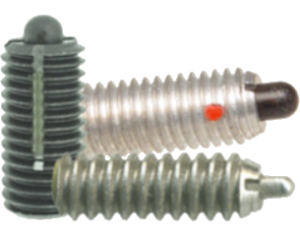
Spring plungers are used in a variety of indexing and positioning applications. Also known as spring-loaded plungers, they feature a they feature a ball or nose and a spring. The spring is designed to apply pressure so that the ball or nose stays in position. Whether you’re planning to use them for indexing, positioning or any other related application, though, you’ll need to choose the right spring plungers.
Ball vs Nose
Some spring plungers have a ball, whereas others have a nose. Aside from this nuance, they are pretty much the same. They both have a spring within a body that, under a load, will apply pressure to the nose or ball. With that said, ball plungers are more effective in applications involving heavy loads, whereas nose spring plungers are more effective in applications involving lateral loads.
Length
Spring plungers are available in different lengths. Some of them are short. Other spring plungers are long. You’ll need to choose spring plungers in an appropriate length based on the applications for which you intend to use them.
Threaded vs Push-Fit
You should consider the body style when choosing spring plungers. There are threaded spring plungers that, as the name suggests, feature a threaded body. There are also push-fit spring plungers that feature a smooth, unthreaded body. If you’re planning to use them in threaded holes, you should choose threaded spring plungers. If you’re planning to use them in unthreaded holes, you should choose push-fit spring plungers.
Drive Type
Don’t forget to consider the drive type when choosing spring plungers. This will determine the installation method. To install a spring plunger, you’ll need to “drive” it into a hole using a tool with the correct bit. Hex spring plungers use a hexagonal drive type. Slotted spring plungers use a slotted drive type. With the corresponding bit, you can easily install them.
Nylok
You may notice that some spring plungers feature Nylok. What is Nylok exactly? Nylok is a type of thread-locking coating. It consists of nylon that’s bonded onto the threading of a fastener. Threaded spring plungers have threading. Like with other threaded fasteners, they are installed in threaded holes. To prevent them from loosening or coming out of these holes, some manufacturers add Nylok to their spring plungers. The Nylok coating will “lock” the spring plunger’s threading so that it stays in the threaded hole.
